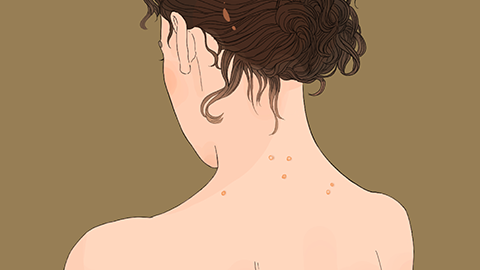What are the symptoms of damp-heat in the lung and stomach?
Discomfort caused by damp-heat in the lung and stomach generally may manifest as a sticky and sore throat, skin breakouts with itching, bad breath and a bitter taste in the mouth, sticky and unsatisfactory bowel movements, coughing with excessive yellow phlegm. If abnormalities occur, timely medical attention is recommended. Specific explanations are as follows:

1. Sticky, swollen, and painful throat: Damp-heat from the lung and stomach rising upward can cause a sticky sensation in the throat, making swallowing feel uncomfortable, accompanied by mild swelling and pain. Symptoms are more noticeable upon waking in the morning, often accompanied by frequent urges to clear the throat that are difficult to relieve.
2. Skin breakouts and itching: Damp-heat exiting through the lung meridian to the skin may lead to red pimples on the face, chest, and back. Some pimples may have pus heads and feel painful when pressed. The skin may also appear oily and occasionally experience mild itching.
3. Bad breath and bitter taste in the mouth: Accumulation of damp-heat in the stomach causes turbid qi to rise, leading to significantly worsened breath odor, noticeable during interpersonal communication. The mouth often feels bitter, and this bitterness may persist for some time even after brushing teeth.
4. Sticky and unsatisfactory bowel movements: Impaired stomach function and downward movement of damp-heat into the intestines can cause stools to become sticky in texture, sticking easily to the toilet bowl and difficult to flush away. Bowel movements may feel unsmooth and incomplete, with a persistent sensation of residual stool.
5. Cough with excessive yellow phlegm: When the lungs are invaded by damp-heat, their normal functions of dispersing and descending may become impaired, easily triggering coughing. The phlegm expelled tends to be yellow and thick in consistency. The cough is often paroxysmal and may worsen in the morning or after consuming greasy foods.
After experiencing symptoms of lung and stomach damp-heat, it is important to maintain a light diet, reduce intake of spicy, greasy, and sweet foods, and consume more heat-clearing and dampness-resolving foods such as wax gourd (winter melon), mung beans, and pears. Additionally, maintaining a regular sleep schedule and avoiding late nights can help prevent worsening of damp-heat symptoms.




